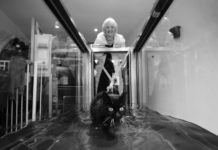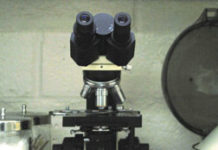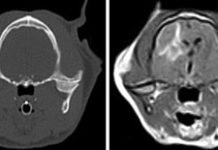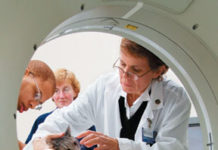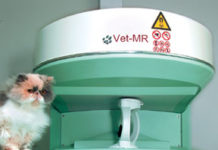Prehistoric Cats and A Cat Treat Recall
A team of scientists analyzing more than 2,000 fossils has made a surprising discovery, one they describe as contrary to current expectation. More than the effect of physical size and climate change, they found evidence indicating that early members of the cat family, arriving in North America from Asia, contributed to the extinction of 40 ancient dog species.
Dont Use First Aid on Snakebites
If youre out for a stroll with your cat in your fenced backyard and he suffers a snakebite, his life can quickly be in danger. The safest course: Dont attempt outdated first-aid measures such as application of a tourniquet or incision to remove the venom with suction. It will already have been absorbed, and tourniquets can compromise blood circulation, causing severe injury.
A Cat on an Underwater Treadmill?
The cats hip problem was so painful that he required a femoral head osteotomy, the surgical removal of the top of the thighbone forming the ball and socket joint. Afterward, the supporting muscle needed to be strengthened to bear the cats weight, but he refused to use his limb.
The solution: Exercise in an underwater treadmill twice a week for two or three weeks. Movement is easier underwater, and the resistance of the water helps strengthen muscle. It got the cat jump-started into using the leg better, says Joseph Wakshlag, DVM, Ph.D., one of 83 specialists in the U.S. certified by the American College of Veterinary Sports Medicine and Rehabilitation. He heads the Sports Medicine and Rehabilitation service at Cornell University Hospital for Animals.
The solution: Exercise in an underwater treadmill twice a week for two or three weeks. Movement is easier underwater, and the resistance of the water helps strengthen muscle. It got the cat jump-started into using the leg better, says Joseph Wakshlag, DVM, Ph.D., one of 83 specialists in the U.S. certified by the American College of Veterinary Sports Medicine and Rehabilitation. He heads the Sports Medicine and Rehabilitation service at Cornell University Hospital for Animals.
Short Takes: March 2015
A new test for chronic kidney disease in cats has identified its onset an average of 17 months earlier than existing methods, according to a small study published in the Veterinary Journal. Researchers at Oregon State University and IDEXX Laboratory developed a biomarker - a substance indicating disease called SDMA - and used it in a controlled study of 32 older but otherwise healthy cats. When available commercially, a test based on the biomarker could alert cat owners and veterinarians to kidney disease through periodic checkups, researchers say.Chronic kidney disease is common in geriatric cats and often causes their death, says researcher Jean Hall, DVM, Ph.D., at Oregon State. Damage from it is irreversible, but this is an important advance, in that we should be able to identify the problem earlier and use special diets to slow the disease.
Robo-Tuffy Provides Hands-on Training
Students honing their emergency skills at the Cornell University College of Veterinary Medicine owe gratitude to a special feline named Fluffy, who doesn’t meow and never needs a litter box. Fluffy is a robotic cat equipped with a mechanical pulse and heart, artificial lungs and electronic hardware and software capable of simulating cardiac arrest, lung diseases, shock and other medical conditions. She and a canine version named Jerry are believed to be the first of their kind used in veterinary schools. Think of Fluffy as a high-tech pet version of the popular battery-operated board game Operation, which tests players’ hand-eye coordination and motor skills.
Cat Research Woes
Why has feline health research fallen behind? Heres the scoop.
Modern Imaging: Many Ways to Scan a Cat
Four technologies are currently used - X-rays, ultrasound, MRI and CT scans.
CT Scans: An Inside View
Computed tomography has become a valuable diagnostic tool for veterinarians. Heres how it may one day help your cat.
MRI: The New Frontier
Use of this modern diagnostic tool is burgeoning these days in veterinary medicine. Heres how it can help your cat.
Ultrasound Provides Inside Information
Veterinarians increasingly depend on this technology to diagnose feline disorders.
New Therapy
Less Radiation, Fewer Treatments
Welcome to My World
Dr. Mew Checks Out the Newest Cataract Treatments








